船舶航行过程中的外载荷主要包括风载荷、波浪载荷和其他碰撞过程载荷,其中,波浪载荷具有一种规律性,船舶在海面航行时受到波浪载荷的作用会发生横摇运动,且随着波浪载荷的增加,船舶横摇运动的频率和幅度都会增加,可能引发船舶发生倾覆事故。因此,针对船舶横摇运动的控制技术一直以来都是研究的重点。
减摇水舱是一种常见的船舶横摇控制技术,减摇水舱通过控制水的振荡周期,与不断变化的波浪载荷相互影响,最终结果是降低波浪载荷对船舶的影响,实现减摇的目的。传统的减摇水舱结构简单,没有独立的控制系统,减摇效果一般。本文在传统减摇水舱的基础上,设计开发一种具有自动控制系统的新型减摇水舱,并对减摇水舱的流体动力学特性进行分析。
1 船舶摇动的水动力建模船舶在波浪载荷下会发生多自由度的运动,以横摇运动的影响最大,首先建立波浪载荷模型为:
| $ f\left( t \right) = B\sin \left( {{w_o}t + {\varphi _0}} \right) \text{,} $ |
式中:
针对船舶在海浪中的摇动,建立运动坐标系如图1所示。
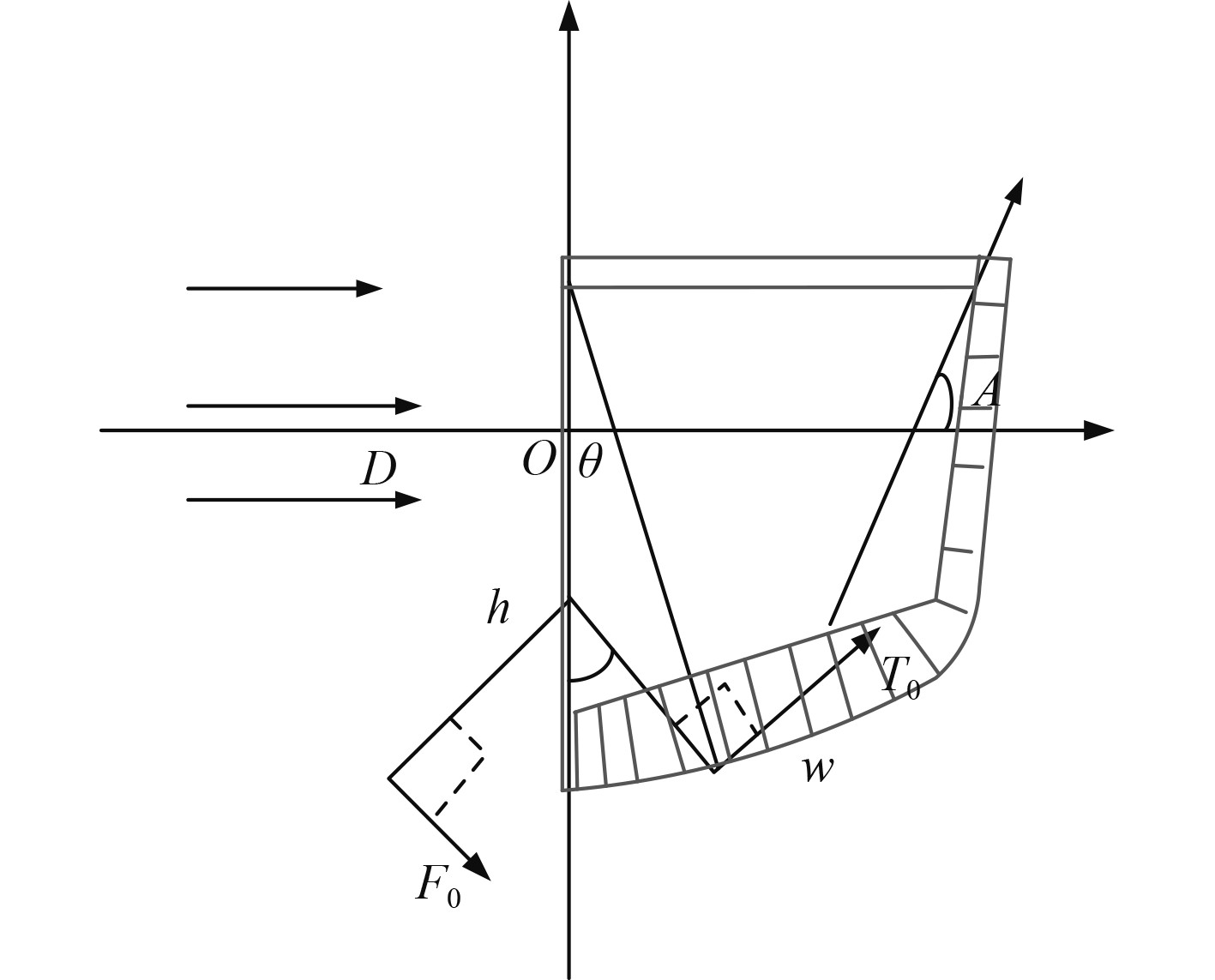
|
图 1 船舶摇动的运动坐标系 Fig. 1 The motion coordinate system of the ship's rocking |
在该坐标系下建立船舶摇动方程:
| $ \left\{ {\begin{array}{*{20}{l}} {\left( {{J_0} + \Delta {J_{}}} \right)w + 2\kappa w + \dfrac{1}{2}Dh\theta = {T_0}},\\ {M\dot v\sin \theta + M\dot u\cos \theta = {F_0}} 。\end{array}} \right. $ |
式中:
船舶产生的摇动具有一定周期性,其周期可用下式计算:
| $ t = \sqrt 2 \pi \sqrt {\frac{{v + \Delta v}}{{D\sin \theta }}} 。$ |
图2为不同周期的船舶摇动角度曲线示意图。
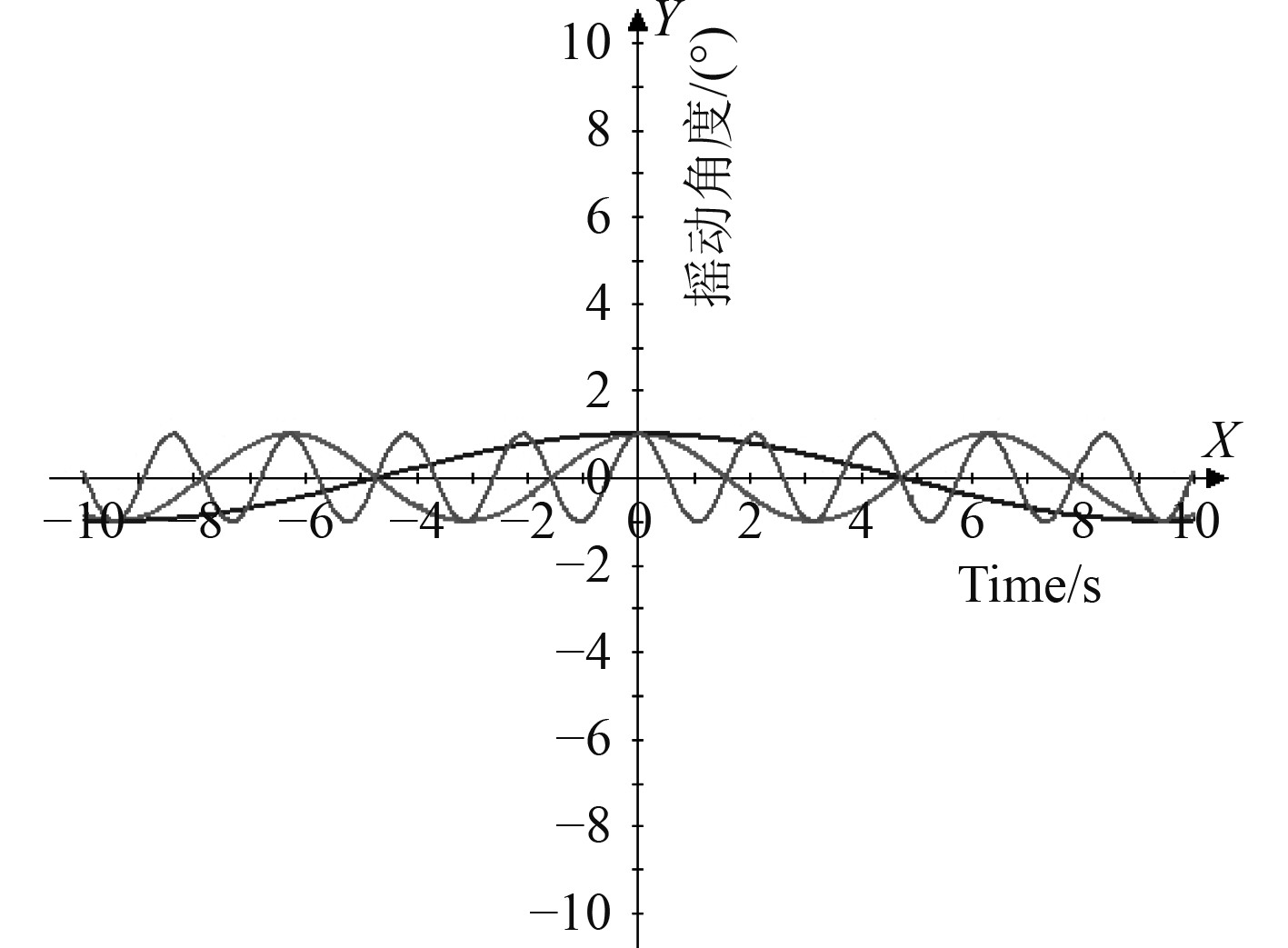
|
图 2 不同周期的船舶摇动角度曲线 Fig. 2 Ship rocking angle curves for different cycles |
由于船舶摇动不仅与波浪、海风等外加载荷有关,还与船舶自身的运动状态有关[1],包括船舶航行的速度、迎浪面积、升力系数等,定义航行速度为
| $ {F_0} = \frac{1}{2}{\rho _0}S \cdot \delta {V_1}^2 \text{。} $ |
式中:S为迎浪面积;
摇动过程受到的干扰合力矩为:
| $ {T_0} = \frac{1}{2}h\sin \theta {F_s}\cos A \text{,} $ |
式中,
为了控制船舶在波浪载荷下的摇动,提升船舶航行的安全性,减摇水舱作为一种有效的减摇设备被广泛使用。减摇水舱结构和原理简单,在船舶中低速航行时具有比较好的减摇效果。
减摇水舱目前主要有2种:
1)被动式
被动式的减摇水舱是指本身没有控制系统,不能产生动力来主动产生减摇力矩,只能依靠船舶和水舱的惯性来减摇,起到阻尼器的作用。被动式减摇水舱的建造成本低,但减摇能力相对较差。
2)主动式
主动式减摇水舱集成了控制系统,能够通过水泵或者其他设备使水舱重心主动变化,能够提前预测船舶发生摇动的角度和方向,提前对船舶施加力和力矩。主动式减摇水舱的减摇效果好,相对应的成本略高。
主动式减摇水舱通过调节水舱的稳定力矩,与扰动力矩的周期相同、相位相差为180°时,可以将扰动力矩抵消,实现船舶减摇功能。
图3为主动式减摇水舱的剖面结构图。
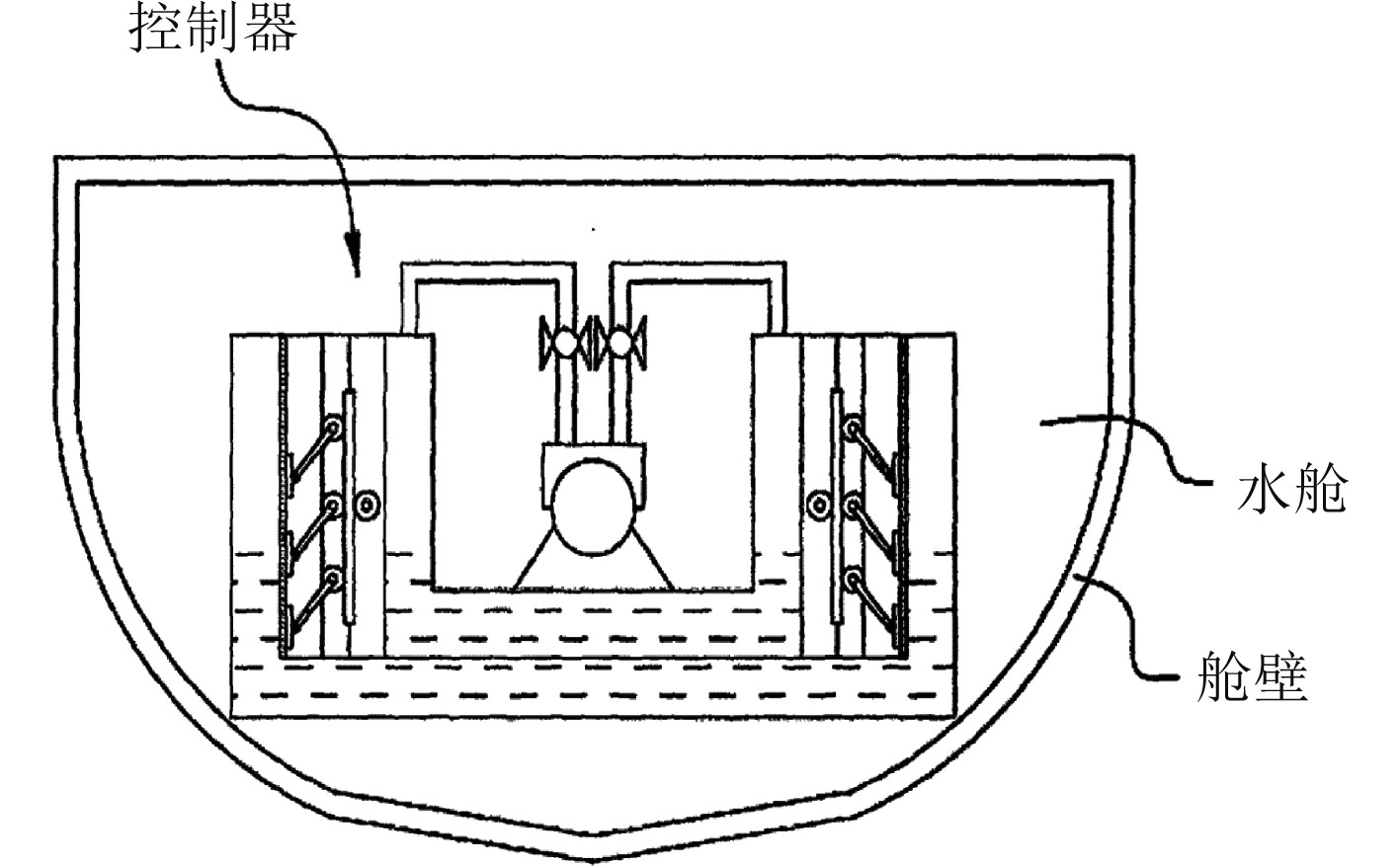
|
图 3 船舶主动式减摇水舱的剖面结构图 Fig. 3 Profile structure of the ship's active anti-roll tank |
为了更方便地进行减摇水舱工作过程的流体动力学分析,做以下假设:
1)船舶在波浪载荷下的摇动是指通过重心G的oy轴摇动,在短时间内,该中心轴可视为固定。
2)减摇水舱关于船舶的纵向中心线对称分布,可视为沿船长方向是等截面的,这种假设有利于简化壁是直的并且是等截面的。
3)整个水舱横截面上是相等的,用单一坐标可以描述水舱内液体的运动。
建立减摇水舱与船舶的耦合流体动力学模型为:
| $ {J_s}\ddot \phi + {B_s}\dot \phi + {K_s}\phi + {J_u}\ddot \theta + {K_{\text{s}}}\theta = M({t}) \text{,} $ |
| $ {J_u}\ddot \phi + {K_s}\phi + {J_{\text{t}}}\ddot \theta + {B_{\text{t}}}\dot \theta + {K_{\text{t}}}\theta = 0 \text{。} $ |
式中:
| $ {J_t} = 2\frac{\rho }{g}{A_0}{R^2}\left( {h + R{A_0}/{A_t}} \right) \text{。} $ |
式中:
| $ {K_t} = \rho {\text{g}}{A_0}{{R}^2} \text{,} $ |
在水舱减摇过程中,水舱产生的力矩为:
| $ {M_{t}} = {a_s}{J_{\text{s}}}\ddot \phi - {b_s}{K_t}\phi + \lambda \text{。} $ |
式中:
| $ {a_s} = 1 - \frac{{{\omega ^2}}}{{\omega _{s}^{}}},\quad {b_{s}} = \frac{{{B_t}\omega }}{{{K_{t}}}},\quad \lambda = \frac{{{K_t}}}{{{K_s}}} \text{。} $ |
式中:
水舱减摇力矩与船体扰动力矩的相互作用原理可用图4表示。
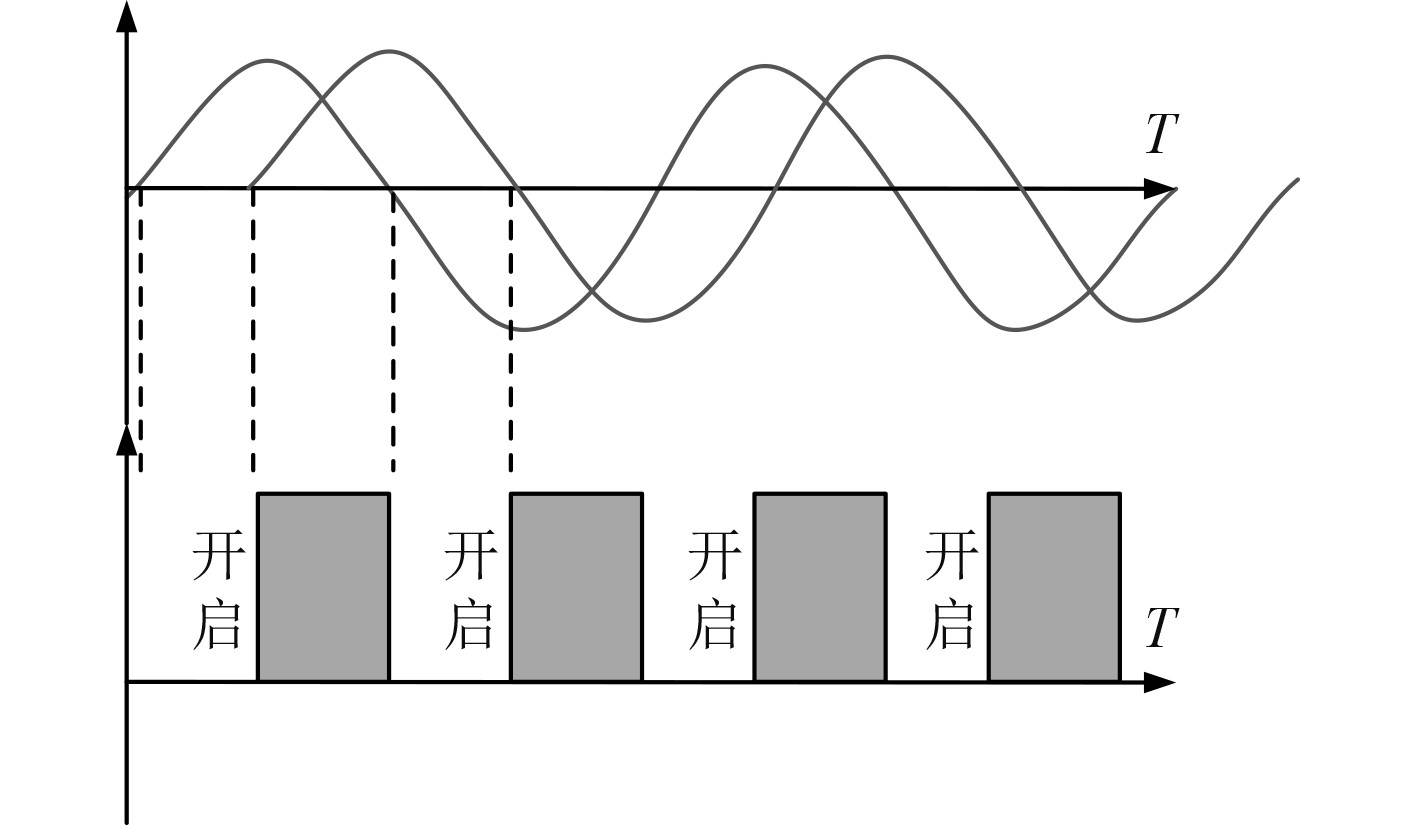
|
图 4 水舱减摇力矩与船体扰动力矩的相互作用原理 Fig. 4 The interaction principle of the anti-roll torque of the tank and the disturbance moment of the hull |
当水舱减摇力矩与扰动力矩周期相同,相位角错开180°时,力矩相互抵消,产生船舶的减摇效果。
3 U型减摇水舱的控制系统设计及仿真 3.1 船舶U型减摇水舱控制系统的设计主动式减摇水舱的控制系统是一个闭环系统,同时具有非线性特征。本文建立的U型减摇水舱控制系统包括上位机平台、信号采集设备、控制电路、液压回路、水舱步进电机等。
图5为船舶U型减摇水舱控制系统的设计原理图。
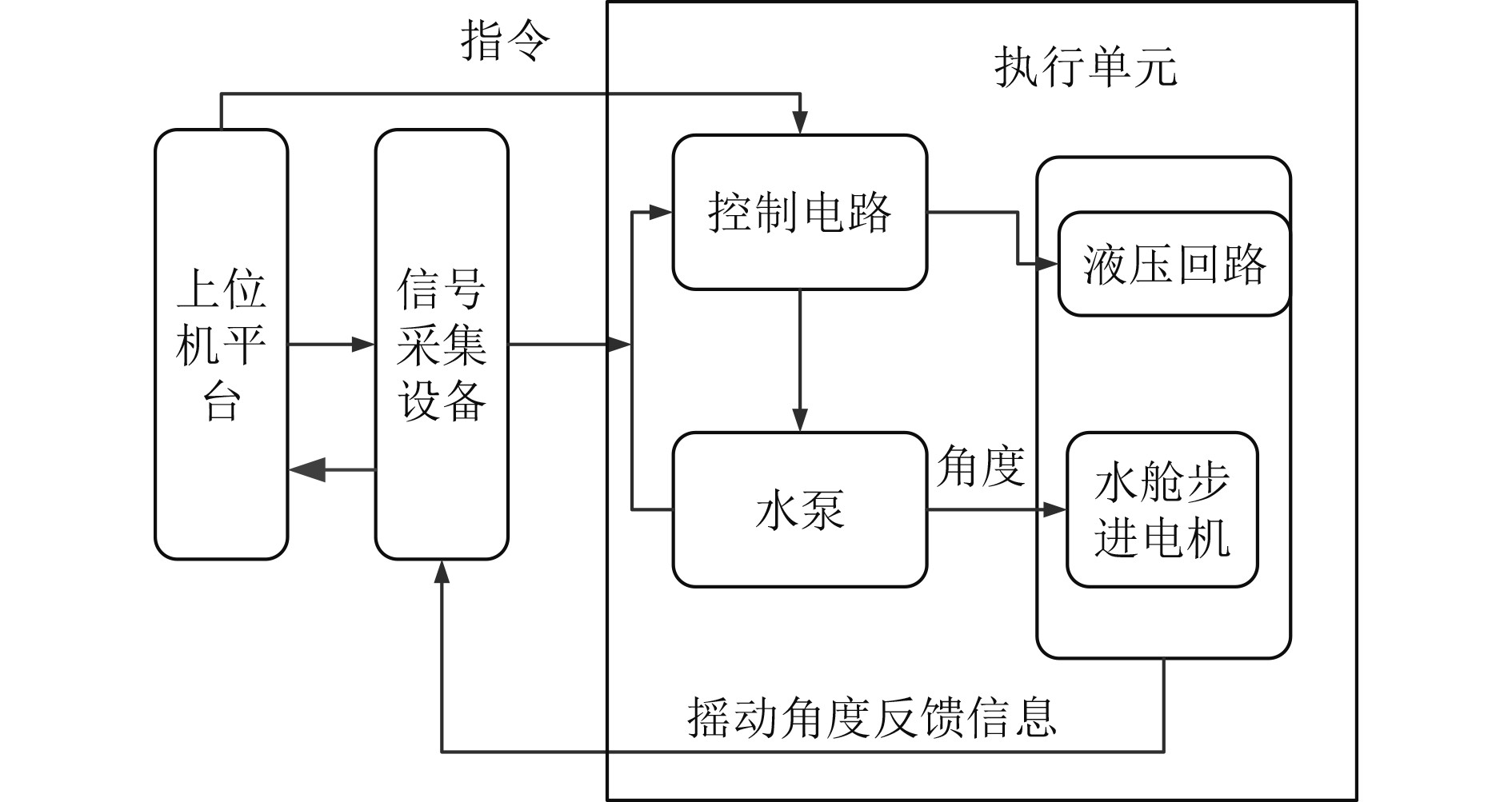
|
图 5 船舶U型减摇水舱控制系统的设计原理图 Fig. 5 Design schematic diagram of ship U-shaped anti-roll tank control system |
1)上位机平台
U型减摇水舱控制系统的上位机是控制系统的核心,选用微型计算机作为上位机,CPU硬件为coreI7-5200[4],运存8 G,数据存储空间256 G,能够满足减摇水舱工作过程的数据运算和数据存储需求。
2)执行单元
执行单元是减摇水舱实际进行动作的单元,包括水泵、水舱步进电机、控制电路、液压回路等。执行单元接收来自上位机的指令,控制水泵流量来产生减摇力矩。
3.2 U型减摇水舱控制系统的减摇特性仿真减摇水舱控制系统的特性通过Simulink仿真来实现,关键步骤包括波浪载荷输入、船舶模型、横摇运动模型和减摇控制系统模型输入、摇动特性仿真、结果输出等。
1)波浪仿真模型
Simulink中建立的波浪仿真模型包括规则波和不规则波2种,规则波如P-M谱等[5]。波浪载荷是进行仿真的输入条件。
2)Simulink数学模型
在Simulink中需要建立船舶的摇动模型、减摇控制系统数学模型、减摇水舱的力矩模型等。
图6为基于Simulink的减摇水舱控制系统仿真流程图。
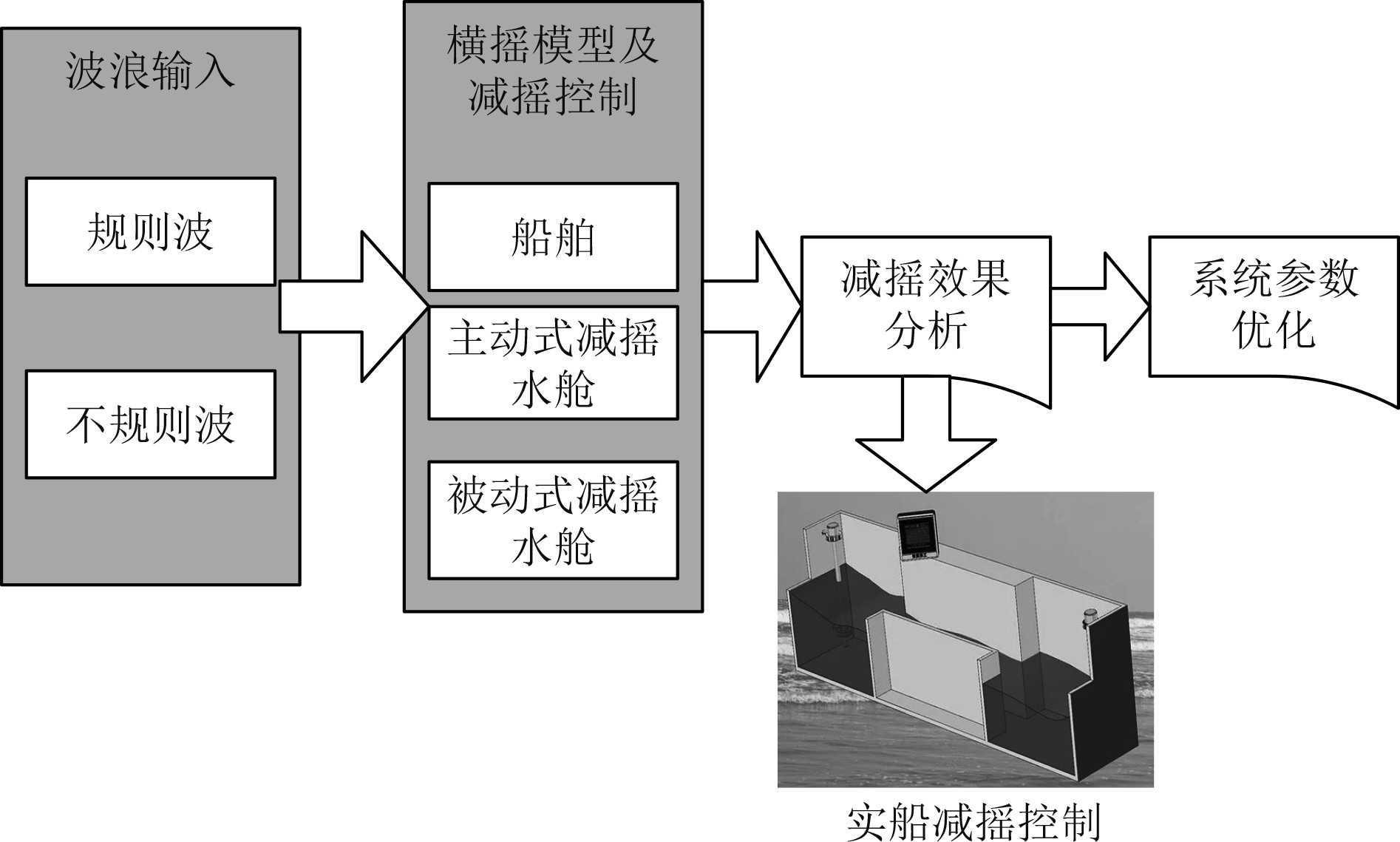
|
图 6 基于Simulink的减摇水舱控制系统仿真流程图 Fig. 6 Simulation flow chart of anti-roll tank control system based on simulink |
3)船舶参数
在仿真系统中定义船舶的排水量、船宽、质心高、吃水、长度和船舶的横摇周期分别为5000 t,25.6 m,3.2 m,12.3 m,5.8 m,12.25 s。
图7为仿真得到的减摇水舱控制系统性能对比曲线。可以看出,开启减摇水舱后,减摇效果明显。
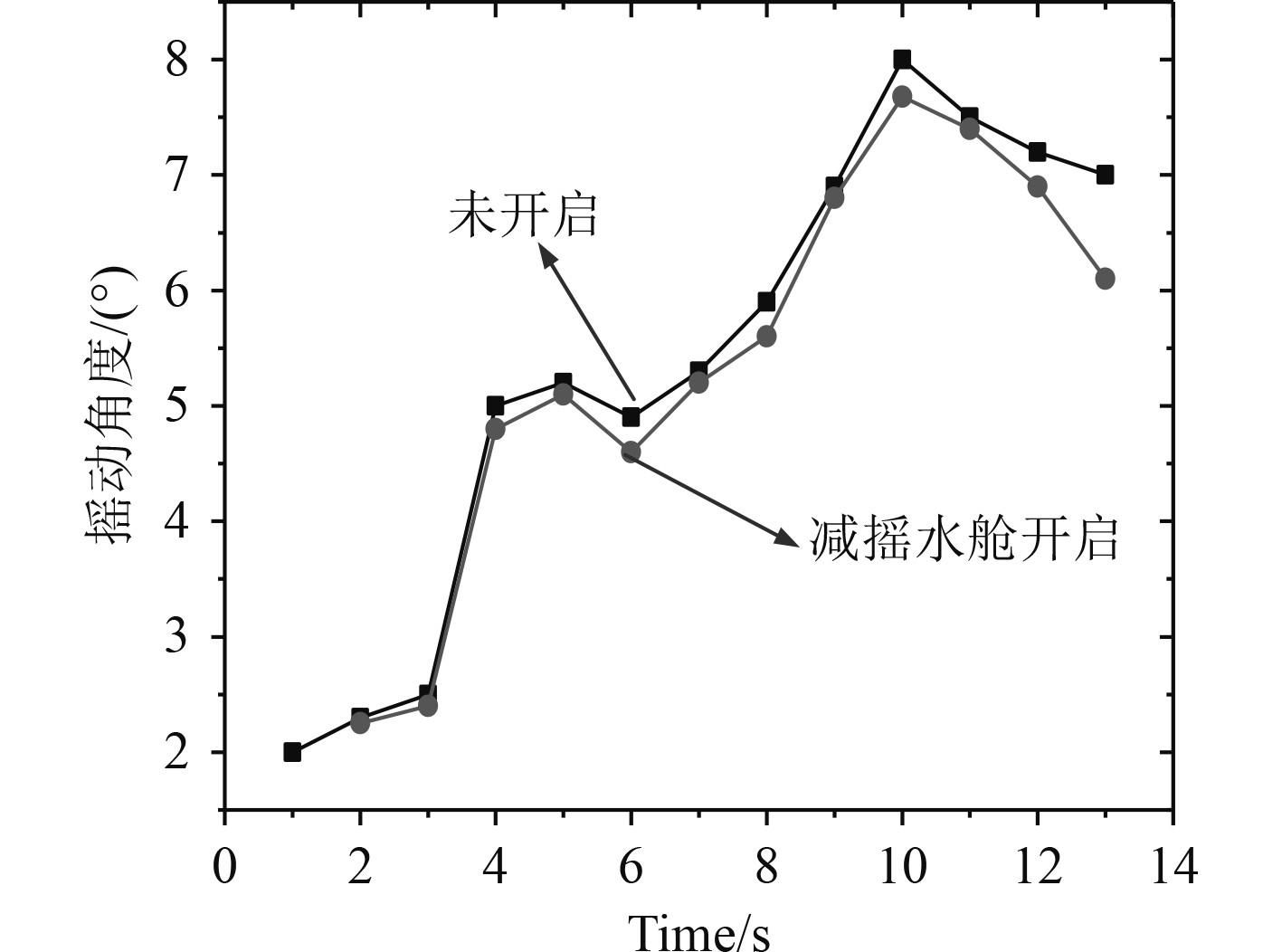
|
图 7 仿真得到的减摇水舱控制系统性能对比曲线 Fig. 7 Comparison curve of performance of anti-shake tank control system obtained by simulation |
U型减摇水舱对于降低船舶在波浪载荷下的摇动有重要的作用,本文针对U型减摇水舱的结构原理、水舱与船体耦合系统的流体动力学特性等进行研究,开发U型减摇水舱的控制系统,并进行系统的仿真验证。
| [1] |
梁利华, 王继铭, 宋吉广, 等. 可变周期被动式减摇水舱设计与仿真研究[J]. 中国舰船研究, 2021, 16(4): 147-154. LIANG Li-hua, WANG Ji-ming, SONG Ji-guang, et al. Design and simulation of variable period passive anti-roll tank[J]. Chinese Journal of Ship Research, 2021, 16(4): 147-154. |
| [2] |
骆寒冰, 王成彬, 盛庆武. 减摇水舱液体晃荡固有特性数值与模型试验[J]. 中国海洋平台, 2020, 35(5): 1-6. LUO Han-bing, WANG Cheng-bin, SHENG Qing-wu. Numerical value and model test of intrinsic characteristics of liquid sloshing in anti-shake water tank[J]. China Offshore Platform, 2020, 35(5): 1-6. |
| [3] |
吴建林, 邵昱, 刘少卿, 等. U型减摇水舱模型试验与数值仿真[J]. 船舶工程, 2016, 38(6): 42-44+54. WU Jian-lin, SHAO Yu, LIU Shao-qing, et al. Model test and numerical simulation of U-shaped anti-roll tank[J]. Ship Engineering, 2016, 38(6): 42-44+54. |
| [4] |
张松涛, 梁利华, 孙明晓, 等. 耦合船体横摇的减摇水舱流体运动和减摇效果预测[J]. 计算力学学报, 2016, 33(2): 252-256+262. ZHANG Song-tao, LIANG Li-hua, SUN Ming-xiao, et al. Prediction of fluid motion and anti-roll effect of anti-roll tank coupled with hull roll[J]. Chinese Journal of Computational Mechanics, 2016, 33(2): 252-256+262. |
| [5] |
邹康, 许晶. 一种带减摇水舱的船舶运动的时域分析方法[J]. 中国造船, 2016, 57(1): 31-37. ZOU Kang, XU Jing. A time-domain analysis method for ship motion with anti-roll tank[J]. China Shipbuilding, 2016, 57(1): 31-37. DOI:10.3969/j.issn.1000-4882.2016.01.004 |
 2023, Vol. 45
2023, Vol. 45
